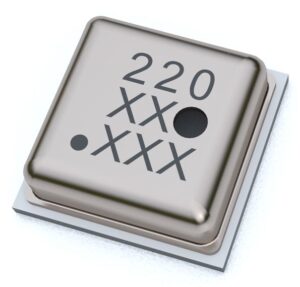Atmospheric sensors see doors opening

When it comes to home and building automation, we can all understand where temperature and humidity sensors or air quality sensors play a role. However, if someone mentions atmospheric or barometric pressure sensors, the most obvious applications are in their traditional weather-forecasting role. Yet barometric pressure sensors are increasingly playing a vital role in event monitoring of Building Automation Systems.
Smart homes and buildings are simply part of modern infrastructure with automated and remote management and control increasingly common. From optimizing environmental control systems like air conditioning, temperature and lighting to enhancing security measures and occupancy detection, the possibilities are extensive.
Of course, it is relatively easy to measure and control many of the environmental variables required such as temperature, air quality and humidity. But our homes and offices are not simple closed environments. Doors and windows are often opened and closed, multiple times during the day. These ‘indoor events’ create small and fast changes in air pressure, and monitoring and locating these can be achieved by using accurate barometric pressure sensors.
Absolute versus relative pressure
When barometric pressure sensors are used in traditional weather-forecasting applications, they measure absolute pressure. If a large drop in ambient pressure is noticed this can indicate an approaching storm. However, for more than 90% of applications it is relative pressure that needs to be measured. In the case of indoor GPS systems this allows for the vertical distance from the ground to be measured.

Relative pressure changes over one week in an office.
For indoor event monitoring, changes in the ambient atmospheric pressure can be monitored using an accurate, low-noise barometric pressure sensor such as ScioSense’s ENS220. With best-in-class performance, the ENS220 can capture the pressure differences when a door is opened or closed.

ENS220 Barometric pressure and temperature sensor

ENS220 specifications
Indoor event localization
A key advantage of using barometric pressure sensors when monitoring indoor events is their capacity to accurately pinpoint the location of the event with only a few sensors. Simply comparing the relative pressure difference between multiple sensors enables simple triangulation. In addition, the high sample rate of ENS220 can be used to accurately indicate when the event occurred.
In fact, during testing at ScioSense’s office in Eindhoven, three sensors at various locations on the first floor of the building could pinpoint when the main entrance to the building was opened and closed.

Indoor events detected: 1) office door opening (pressure spikes in downwards direction) 2) office door opening and closing (spikes in both directions), 3) front door opening & closing (pressure lowers due to pressure equalisation with environment)
Smart and efficient solutions
By being able to quickly and accurately detect when windows and doors are opened and closed, smart home automation systems have the option to temporarily suspend HVAC systems to save on costs. In fact, given the highly sensitive temperature sensor that is integrated into the ENS220, designers could easily create a smart thermostat that includes open window detection.
For more information, you can read our Application Note: Indoor Event Detection by ENS220.
Related links
ENS220: Barometric pressure and temperature sensor
Application Note: ENS220 Design Guidelines
Application Note: Indoor Event Detection by ENS220
Applications: Building automation